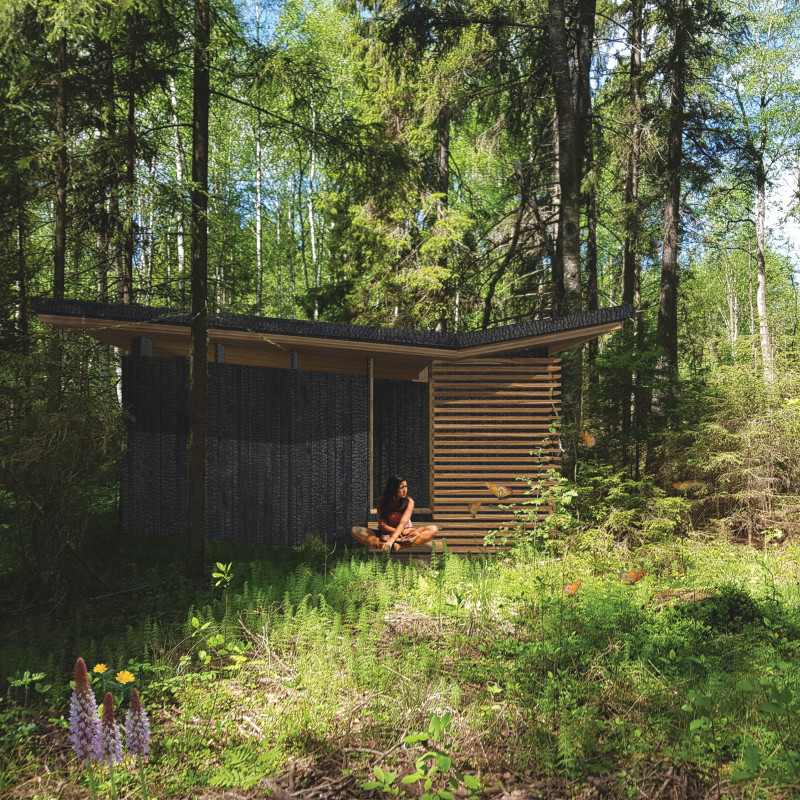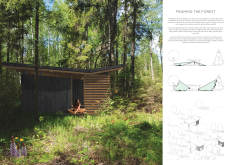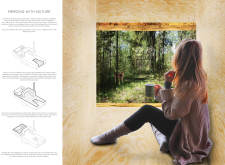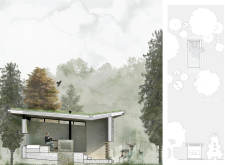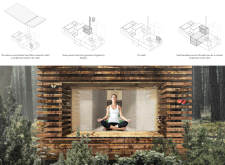5 key facts about this project
# Analytical Report: Architectural Design Project
## Overview
The project involves a series of innovative cabin designs situated in a forest environment, with a primary focus on enhancing the user's connection to nature. These cabins are designed as spaces for contemplation and relaxation, contributing to a lifestyle centered around sustainability. The architectural intent is to create peaceful retreats that integrate harmoniously with the surrounding landscape while promoting ecologically responsible practices.
## Spatial Interaction and Design
The overarching concept, "Framing the Forest," manifests through a variety of design approaches, each cabin strategically positioned to offer distinct views and experiences of the natural surroundings. The arrangements prioritize mindfulness and introspective engagement with the environment, utilizing transparency and outdoor integration to enhance user interactions with the forest. Each design serves as a sanctuary, encouraging moments of stillness and reflection amid the flora and fauna.
### Material Selection and Sustainability
The project employs an array of sustainable materials selected for both their functional capabilities and minimal ecological impact. Key materials include laminated veneer lumber and timber for structural components, steel for durability, and concrete for foundational support. A green roof system of sedum not only provides insulation but also integrates the cabins within their ecosystems. Large glass windows maximize natural light and frame the picturesque forest views, further connecting the indoors with the outdoors. Additional features include rainwater harvesting systems and innovative energy solutions, such as steam-powered electricity generation, showcasing a strong commitment to sustainable living practices and environmental stewardship.


